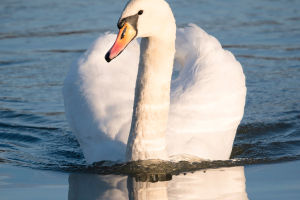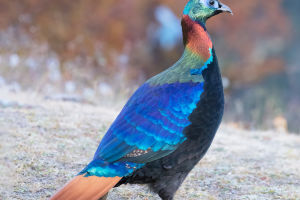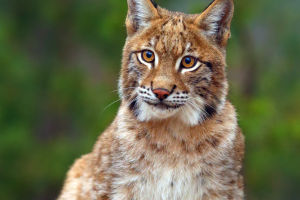The Purple-throated Carib, also known as the Purple Saberwing Hummingbird, is a common bird found in tropical rainforests. It belongs to the Trochilidae family and is primarily distributed in the Caribbean region, including the Bahamas, Cuba, Jamaica, and Dominica.
The Purple Saberwing Hummingbird gets its name from the beautiful purple throat. The males of this species have vibrant purple throats and feathers that display a mix of green and blue hues.
On the other hand, females have a relatively darker appearance, with greenish-brown plumage.
The primary source of food for the Purple Saberwing Hummingbird is nectar. Its long and curved beak is perfectly adapted for extracting nectar from deep flower stamens.
In addition to nectar, they also consume small invertebrates like insects and spiders.
The reproductive behavior of this hummingbird species is quite intricate. Male Purple Saberwing Hummingbirds establish territories where they display their ornate wing and tail feathers to attract females.
They perform elaborate dances and flight displays to showcase their charms. Once a female is successfully enticed, they collaborate in building the nest and share the responsibilities of incubating the eggs and feeding the chicks.
In summary, the Purple Saberwing Hummingbird is a mesmerizing and splendid bird that captivates observers with its purple throat and graceful flight. It plays a crucial role in pollination and helps regulate insect populations within tropical rainforests.
Now let's delve into the detailed living habits of the Purple-throated Carib:
1. Habitat: The Purple Saberwing Hummingbird primarily inhabits tropical rainforests and montane forests. It can be found at various altitudes, ranging from sea level to as high as 2,000 meters.
2. Feeding Habits: Purple Saberwing Hummingbirds primarily rely on nectar as their main food source. Their long and curved beaks are perfectly adapted for extracting nectar from the deep recesses of flowers.
Additionally, they supplement their diet with small invertebrates such as insects and spiders.
3. Flight Skills: These hummingbirds exhibit exceptional flying abilities. They are capable of hovering swiftly, flying backward, and even hanging upside down.
Their wings flutter rapidly, beating dozens or even hundreds of times per minute, enabling them to maintain stability while in flight.
4. Territoriality and Breeding Behavior: Male Purple Saberwing Hummingbirds are territorial creatures and exhibit their beauty through the display of their distinctive wing and tail feathers.
They engage in complex dances and aerial acrobatics to attract female mates.
Once a female is enticed, the pair constructs the nest together and takes joint responsibility for incubating the eggs and caring for the hatchlings.
5. Migration: In certain regions, Purple Saberwing Hummingbirds undertake seasonal migrations, particularly during the dry season when food resources become scarce.
They may travel from higher altitudes to lower areas or seek alternative locations with abundant nectar and food sources.
6. Social Behavior: Purple Saberwing Hummingbirds are generally solitary animals. Outside of the breeding season, males and females do not frequently interact.
They maintain a certain distance from one another and compete for food resources and territorial boundaries.
These are some of the distinctive habits displayed by the Purple-throated Carib, highlighting its vital role in the ecosystem as a pollinator and a contributor to insect population control within the tropical rainforest.


